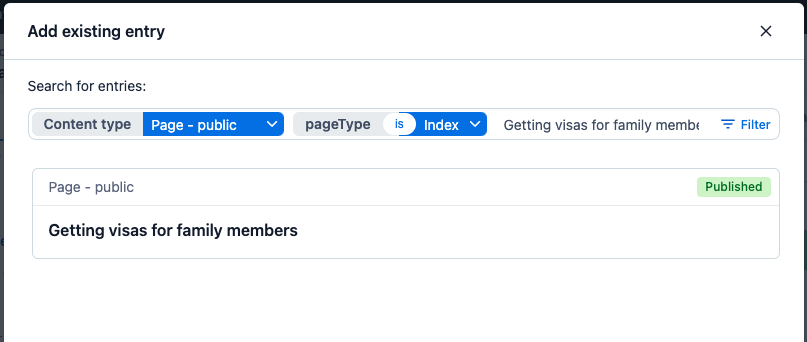Moving pages
This advice applies to England. See advice for See advice for Northern Ireland, See advice for Scotland, See advice for Wales
Create a redirect when you move a page
You need to create a redirect when you move a page. This will make sure users who bookmarked the old URL will still get to the page.
You should publish the redirect just before moving the page.
You can check how to create a redirect.
To move a page to a different location, you’ll need to remove its parent page and add a new one. The parent page will usually be an index.
Find the ‘Parent page’ field. Click on the 3 dots in the top right, then click ‘Remove’.

Now click 'Add content' to open a drop-down menu, then click ‘Add existing content’.

Search for the name of the index page by typing in the search bar. You can also use the ‘pageType’ search filter to search for index pages only.

Click the index page you want to add - it will be added to the parent page field.
Republish the parent page
After moving a page, you need to republish the index it now appears in. This should make it appear on the live site.
Move the page in EPiServer
It’s important to also move the page in EPiServer so the structure is the same in both CMSs. You don’t need to set up a redirect in EPiServer.
Help us improve our website
Take 3 minutes to tell us if you found what you needed on our website. Your feedback will help us give millions of people the information they need.